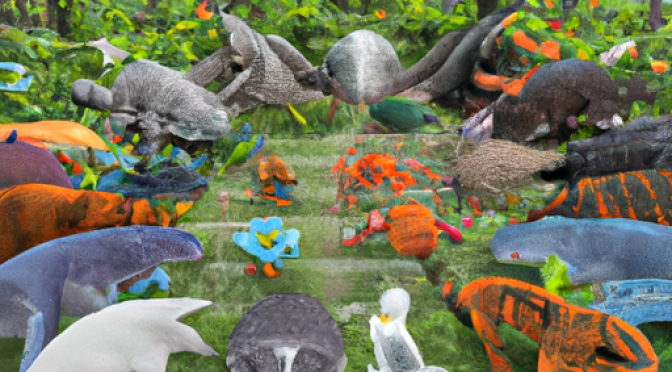How can VR and AR help protect biodiversity?
In recent years, virtual reality (VR) and augmented reality (AR) technologies have been gaining ground in various fields, including biodiversity conservation. These innovative technologies allow users to have interactive and lifelike experiences that can help them learn about and conserve the natural environment.
VR and AR for biodiversity research
VR and AR technologies allow researchers to study biodiversity in virtual environments. This makes it easier to observe and study different organisms, plants and ecosystems without directly affecting or damaging them. In virtual environments, researchers can work in simulated natural habitats and study biodiversity changes over time in an interactive way.
AR technology offers an additional advantage for biodiversity research by allowing data collection and analysis in real time. For example, researchers can use AR glasses to collect data in nature and instantly visualise and analyse the data. This allows them to monitor and assess the status of biodiversity more quickly and efficiently.
VR and AR in education and awareness raising
VR and AR technologies can be useful tools for education and awareness raising on biodiversity conservation. VR and augmented reality can help students learn interactively about different organisms, their habitats and the importance of biodiversity. This will give them a better understanding of the complexity and vulnerability of the natural environment and how they can help to preserve it.
VR and AR technologies also allow users to take virtual journeys to biodiversity-rich areas around the world. This allows users to directly experience the beauty and richness of nature and the importance of protecting biodiversity.
VR and AR for biodiversity conservation
VR and AR technologies not only have an important role to play in research and education, but can also directly help to protect biodiversity. VR and augmented reality offer an opportunity for people to learn about and understand the threats to biodiversity and raise awareness of the importance of sustainable lifestyles and conservation.
For example, VR and AR applications allow users to have virtual experiences of endangered species and habitats. This can help people to better understand the urgency of biodiversity conservation and motivate them to take action.
VR and AR technologies can therefore help biodiversity conservation in many ways. When used in research and education, they can enable better understanding and awareness, while when used directly, they can raise awareness of the threats to biodiversity and motivate people to act.
∑: biodiversity, technologies, conservation, virtual, awareness, research, directly, education, augmented
